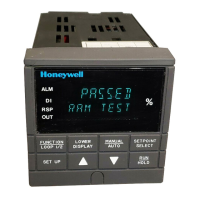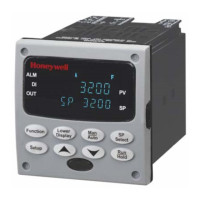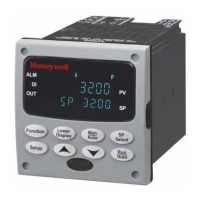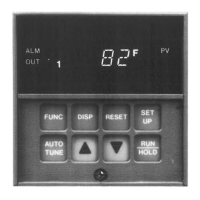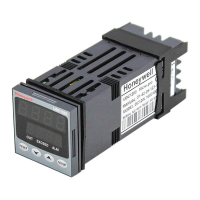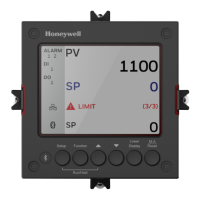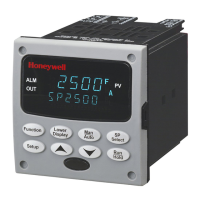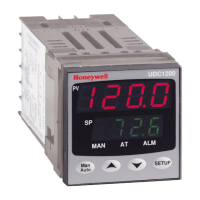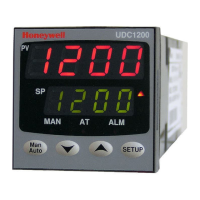Installation
24 UDC3500 Universal Digital Controller Product Manual 3/07
2.7 Wiring Diagrams
Identify Your Wiring Requirements
To determine the appropriate diagrams for wiring your controller, refer to the model
number interpretation in this section. The model number of the controller is on the
outside of the case.
Output Functionality and Restrictions
Table 2-6 and Table 2-7 show the control functionality and number of alarms that are
available based upon the installed outputs quantity and type. First, use the left-most
column to find the Control Output Algorithm desired for your instrument. Then use the
second column to find the Output 2 Option selection installed in your instrument. The
rest of the columns will then show how the instrument delivers your desired Output
functionality and the quantity of alarms available.
In Table 2-6, “HEAT” is used as meaning Loop 1 Control Output #1 and “COOL” is
used as meaning Loop 1 Control Output #2. When Position Proportional or Three
Position Step Control (TPSC) is configured, then “HEAT” means OPEN while “COOL”
means CLOSE.
In Table 2-7, “Loop 2 HEAT” is used as meaning Loop 2 Control Output #1 and “Loop 2
COOL” is used as meaning Loop 2 Control Output #2.
See Figure 2-4 Composite Wiring Diagram, for information on where the customer
terminals are for all of these outputs and alarms.
ATTENTION
The selection for Loop 1 Output takes precedence over the selection for Loop 2 Output.
For example, if you select the Loop 1 Output Algorithm as Current Duplex 50%, then
you cannot have Current Duplex 50% as the Output Algorithm for Loop 2.
The Output 2 option shown in these tables as “Single Relay” can be any of the
following selections: Electro-Mechanical Relay, Solid-State Relay or Open Collector
Output.
If the controller is configured to use the same relay for more than one function, then the
following priority is used to determine how the relay functions: Control Outputs take
precedence over Alarms, which in turn take precedence over Time/Events, which in turn
take precedence over Logic Gate Outputs.
For example, if you select the Loop 2 Output Algorithm as Time Simplex (which uses
Relay 3), enable Alarm 3 (which also uses Relay 3) and configure a Logic Gate to use
Relay 3, then the instrument will use Relay #3 to perform the Time Simplex output and
ignore the Alarm and Logic Gate functions.

